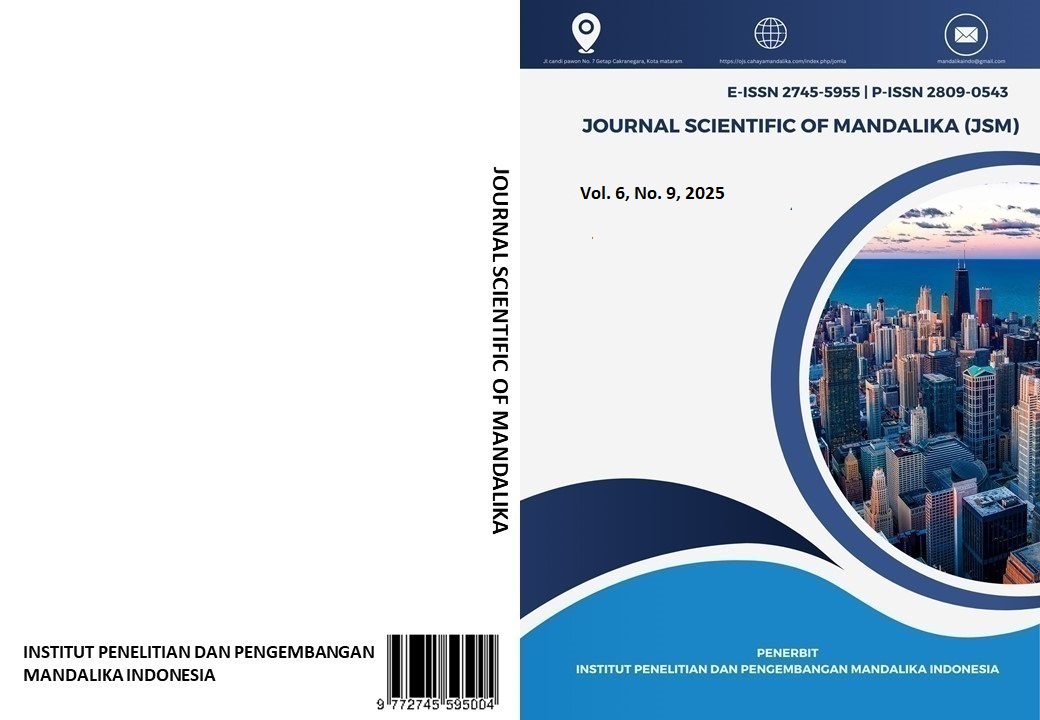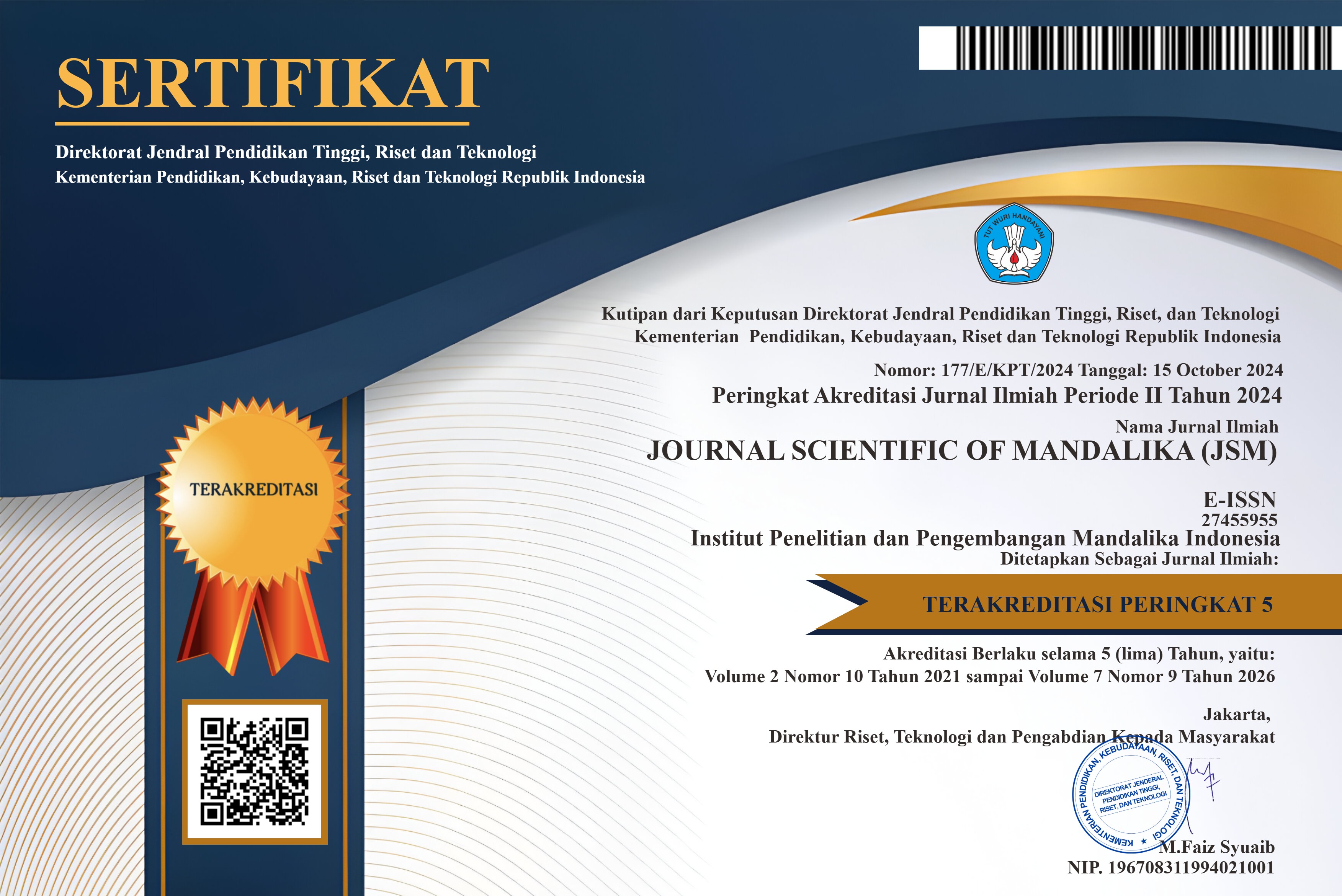Literature Review of Project Risk Identification in Steel Building Construction
Abstract
The steel construction is one of the vital sectors in the development of modern infrastructure and buildings. However, despite the many advantages that this industry has, steel construction contractors are also faced with a number of challenges that require strategies and innovations to overcome. Risk can be defined as the chance of an adverse event occurring, which is caused by the uncertainty of what will be faced. Construction risk management is the process of identifying, assessing, and controlling potential risks that could affect a construction project. This involves analyzing all aspects of a project and implementing strategies to prevent or minimize the impact of these risks. Here are some steps can take to effectively manage risks in construction projects. Using sources based on the previous research, here will be identifying what types of risk factors are most commonly occurs for steel building construction project. The types of risk that will be discussed here will be divided into three types based on internal risk, external risk, and project risk. Each type of risk includes technical and non-technical risks. Based on the data this study identify that internal risk with technical aspects is the most common type of potential risk occurs on steel building construction project.
References
AS/NZS. (2004). Risk management guidelines companion to AS/NZS 4360:2004.
Chou, C. C., Ko, C. Y., Hsiao, L. K., Ho, Y. T., & Ou, Y. C. (2020). Risk Assessment and Management for Lightweight Steel Structure Construction for Industrial and Residential. Applied Mechanics and Materials, 897, 226–230. https://doi.org/10.4028/www.scientific.net/amm.897.226
Dobiášová, S., & Kubečka, K. (2014). Risk analysis of steel construction projects documentation blast furnaces. Advanced Materials Research, 899, 564–567. https://doi.org/10.4028/www.scientific.net/AMR.899.564
Dunant, C. F., Drewniok, M. P., Sansom, M., Corbey, S., Cullen, J. M., & Allwood, J. M. (2018). Options to make steel reuse profitable: An analysis of cost and risk distribution across the UK construction value chain. Journal of Cleaner Production, 183, 102–111. https://doi.org/10.1016/j.jclepro.2018.02.141
Elsanadedy, H., Alrubaidi, M., Abbas, H., Almusallam, T., & Al-Salloum, Y. (2021). Progressive collapse risk of 2D and 3D steel-frame assemblies having shear connections. Journal of Constructional Steel Research, 179, 106533. https://doi.org/10.1016/j.jcsr.2021.106533
Faggiano, B., Esposto, M., & Mazzolani, F. M. (2008). Risk Assessment of Steel Structures Under Fire. The 14th World Conference on Earthquake Engineering 2008, Beijing, China.
Gardner, J., & Key, P. (2021). How to reduce the risk of Structural Steelwork failing in your projects. 1–15.
Giannetti, C., & Ransing, R. S. (2016). Risk based uncertainty quantification to improve robustness of manufacturing operations. Computers and Industrial Engineering, 101, 70–80. https://doi.org/10.1016/j.cie.2016.08.002
Harris, J. L., & Michel, J. L. (2019). Approximate Fundamental Period for Seismic Design of Steel Buildings Assigned to High Risk Categories. Practice Periodical on Structural Design and Construction, 24(4). https://doi.org/10.1061/(asce)sc.1943-5576.0000444
Hidayah, S. (2021). Project Risks Identification of Steel Construction on Industrial Buildings : A Systematic Literature Review. IJIEM - Indonesian Journal of Industrial Engineering and Management, 2(3), 175. https://doi.org/10.22441/ijiem.v2i3.11895
Hong, Y., Wang, X., Wang, Y., & Zhang, Z. (2020). Study on reducing the risk of stress corrosion cracking of austenitic stainless steel hydraulically expanded joints. Engineering Failure Analysis, 113(April), 104560. https://doi.org/10.1016/j.engfailanal.2020.104560
Hwang, J. P., Jung, M. S., Kim, M., & Ann, K. Y. (2015). Corrosion risk of steel fibre in concrete. Construction and Building Materials, 101, 239–245. https://doi.org/10.1016/j.conbuildmat.2015.10.072
Hwang, S.-H., & Lignos, D. G. (2017). Effect of Modeling Assumptions on the Earthquake-Induced Losses and Collapse Risk of Steel-Frame Buildings with Special Concentrically Braced Frames. Journal of Structural Engineering, 143(9), 1–16. https://doi.org/10.1061/(asce)st.1943-541x.0001851
Hwang, S. H., Jeon, J. S., & Lee, K. (2019). Evaluation of economic losses and collapse safety of steel moment frame buildings designed for risk categories II and IV. Engineering Structures, 201(October), 109830. https://doi.org/10.1016/j.engstruct.2019.109830
Hwang, S. H., & Lignos, D. G. (2018). Nonmodel-based framework for rapid seismic risk and loss assessment of instrumented steel buildings. Engineering Structures, 156(November 2017), 417–432. https://doi.org/10.1016/j.engstruct.2017.11.045
IA, R., Haggag SY, A., I, M., & HM, E. (2016). Construction Performance Control in Steel Structures Projects. Industrial Engineering & Management, 05(04). https://doi.org/10.4172/2169-0316.1000201
Kook, D., & Kim, S. (n.d.). An Analysis of Schedule Risk Factors of Structural Steel Work. 1241–1246.
Krentowski, J. (2014). Steel roofing disaster and the effect of the failure of butt joints. Engineering Failure Analysis, 45, 245–251. https://doi.org/10.1016/j.engfailanal.2014.07.008
Lagaros, N. D. (2014). Risk assessment of steel and steel-concrete composite 3D buildings considering sources of uncertainty. Earthquake and Structures, 6(1), 19–43. https://doi.org/10.12989/eas.2014.6.1.019
Lee, S. A., Park, K. P., Kim, J., & Ann, K. Y. (2020). Sensitivity analysis for binders in concrete mix to the corrosion risk of steel embedment in chloride-bearing environments. Construction and Building Materials, 251, 118944. https://doi.org/10.1016/j.conbuildmat.2020.118944
Leu, S. Sen, & Chang, C. M. (2013). Bayesian-network-based safety risk assessment for steel construction projects. Accident Analysis and Prevention, 54, 122–133. https://doi.org/10.1016/j.aap.2013.02.019
Petroutsatou, K., & Kantilierakis, D. (2023). Productivity Analysis and Associated Risks in Steel Structures. Buildings, 13(4). https://doi.org/10.3390/buildings13040905
Rad, A. R., & Banazadeh, M. (2018). Probabilistic risk-based performance evaluation of seismically base-isolated steel structures subjected to far-field earthquakes. Buildings, 8(9), 1–22. https://doi.org/10.3390/buildings8090128
Rashid, I., Aboul Haggag, S., & Elhegazy, H. (2015). Improving the Crew Productivity for the Construction of Steel Structure Projects (Using Matlab Model). International Journal of Food Science & Technology, 4(4), 14–22.
Shahtaheri, Y., Rausch, C., West, J., Haas, C., & Nahangi, M. (2017). Managing risk in modular construction using dimensional and geometric tolerance strategies. Automation in Construction, 83, 303–315. https://doi.org/10.1016/j.autcon.2017.03.011
Song, J. W., Yu, J. H., & Kim, C. D. (2007). Construction safety management using FMEA technique: Focusing on the cases of steel frame work. Association of Researchers in Construction Management, ARCOM 2007 - Proceedings of the 23rd Annual Conference, 1(September), 55–63.
Tylek, I., Kuchta, K., & Rawska-Skotniczny, A. (2017). Human errors in the design and execution of steel structures-a case study. Structural Engineering International: Journal of the International Association for Bridge and Structural Engineering (IABSE), 27(3), 370–379. https://doi.org/10.2749/101686617X14881937385287
Ummah, M. S. (2019). No 主観的健康感を中心とした在宅高齢者における 健康関連指標に関する共分散構造分析Title. Sustainability (Switzerland), 11(1), 1–14. http://scioteca.caf.com/bitstream/handle/123456789/1091/RED2017-Eng-8ene.pdf?sequence=12&isAllowed=y%0Ahttp://dx.doi.org/10.1016/j.regsciurbeco.2008.06.005%0Ahttps://www.researchgate.net/publication/305320484_SISTEM_PEMBETUNGAN_TERPUSAT_STRATEGI_MELESTARI
Yang, Y., & Chan, A. P. C. (2018). Driving factors and obstacles in adopting structural steel in Hong Kong: Case studies. Asccs. https://doi.org/10.4995/asccs2018.2018.7984
Yeganeh, A., Younesi Heravi, M., Razavian, S. B., Behzadian, K., & Shariatmadar, H. (2022). Applying a new systematic fuzzy FMEA technique for risk management in light steel frame systems. Journal of Asian Architecture and Building Engineering, 21(6), 2481–2502. https://doi.org/10.1080/13467581.2021.1971994
Copyright (c) 2025 Ismail Nur Ariyanto

This work is licensed under a Creative Commons Attribution-ShareAlike 4.0 International License.













